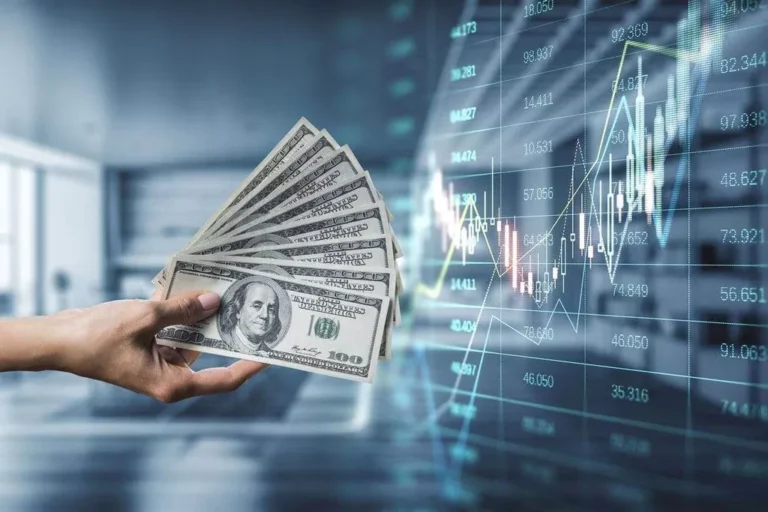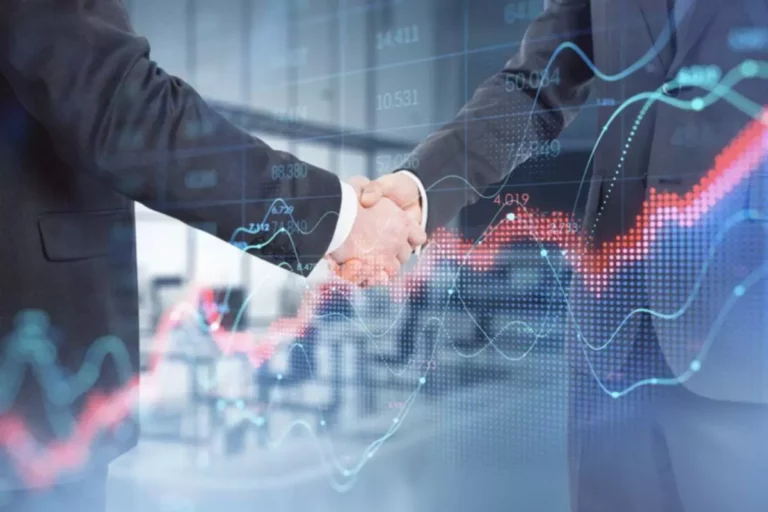Content
Aladdin tracks market sentiment by analyzing millions of data points from news articles, social media, and other sources to help portfolio managers make better-informed decisions. By capturing the emotional pulse of the market, Aladdin can provide early indicators of potential market shifts, allowing for quicker reactions to emerging risks or opportunities. Incorporating artificial intelligence has become a popular strategy by leveraging sophisticated platforms that integrate deep learning technologies with ai trading system real-time market analysis data.
AI Trading: How AI Is Used in Stock Trading

Across Asia, countries like Japan and Singapore are developing their own guidelines to regulate AI in financial markets, focusing on transparency and ethical usage of AI in trading strategies. If the data provided by the client is inaccurate or incomplete, the recommendations generated by the system may not align with the investor’s true needs. Additionally, in volatile markets, clients may become uneasy and seek reassurance, which robo-advisors cannot provide in the same way a human advisor can. The lack of emotional support during AML Risk Assessments turbulent times is one area where AI still falls short. One significant issue is the difficulty in interpreting sarcasm, irony, or cultural nuances in the text.
Artificial Intelligence Industry in the US [Deep Analysis]
Have a listen to what AI entrepreneur and advisor Dr. Ayesha Khanna has to say about how generative AI will change trading and investing, in The Vantage View. This cutting-edge technology, short for Generative Artificial Intelligence (AI), possesses the remarkable ability to conjure new content across various mediums, from images and text to video, audio, simulations and even code. By harnessing the power of Generative https://www.xcritical.com/ AI, novel content can be crafted based on specific input data, such as prompts, queries or existing samples.
Gold price clings to gain around $2,670/two-week top, short-term bullish bias remains
In some ways, the technology can replace human labor since it’s able to analyze large datasets at fast speeds with relatively little need for human intervention. AI investing bots can also advise money managers on what’s missing in their portfolios, informing them on how to better balance them. The applications for generative AI and other forms of the emerging technology are opening up new ways for its use in investing.
Top 10 Chart Patterns Every Trader Should Know
What’s more, they account for market volatilities, adapt to new information, and improve predictive accuracy over time. Humans remain key players in stock markets, but the use of AI for trading is increasingly impacting the industry. The share of algorithmic (algo) trading — where AI-based computer algorithms automatically execute trades — is continuously growing. With increasing regulatory demands on trading activities, AI has become indispensable for ensuring compliance and monitoring. These algorithms are meticulously engineered to monitor all trading activities to comply with rigorous regulatory standards, thereby minimizing financial penalties and protecting against reputational harm. For instance, JPMorgan Chase uses AI to monitor its trading activities in real time, ensuring that all transactions adhere to internal and external regulatory standards.
For example, companies such as Renaissance Technologies utilize advanced mathematical models to forecast price movements in financial markets. Their success hinges on algorithms that can learn from market data and execute trades at optimal times, significantly increasing efficiency and reducing the risk of human error. Beyond basic pattern recognition, these AI systems also employ advanced statistical techniques and anomaly detection to forecast market movements, further refining investment strategies. Adaptive algorithms are continuously updated with new data, enhancing their predictive power over time without human intervention. Machine learning is a subfield of artificial intelligence that involves the use of algorithms and statistical models to enable computer systems to automatically improve their performance on a task by learning from data. In financial trading and automation, machine learning algorithms are applied to analyze vast amounts of financial data, identify patterns and trends, and make predictions or decisions based on that analysis.
It’s an example of how AI is applied to natural language processing, enabling machines to engage in conversation and answer questions based on learned patterns from large datasets. When using AI, it is critical to comply with financial regulations to avoid legal issues. This includes ensuring that the AI model is transparent and explainable and that it does not engage in illegal activities such as insider trading. Ideally, an AI system will continuously analyse incoming data and adapt to changing market conditions.
- As blockchain technology matures, AI trading systems may integrate with decentralized finance (DeFi) platforms, enhancing transparency, security, and accessibility.
- The future of trading will likely involve an even deeper integration of AI into the decision-making process, but human traders will continue to play a vital role.
- As we navigate this new era of technological innovation, the future unfolds between the realms of human ingenuity and algorithmic precision.
- Below, we explore the practical applications of AI in personal investment strategies for 2024.
- There isn’t an AI that will fully automate stock trading for retail investors, but there are tools like Magnifi, an AI chatbot, that can help you invest better.
Stress testing involves testing an investment strategy on historical data or through a simulation to see how it holds up under various circumstances. Investors can then detect flaws in their strategies and determine steps to strengthen their financial standing. Using historical data to forecast stock market trends is common, but it has limitations.

However, it is important to understand that the stock market is influenced by a multitude of factors, including geopolitical events, economic indicators, and market psychology, which can be difficult to predict accurately. The integration of AI has become a popular strategy by formulating sophisticated platforms that integrate deep learning technologies with real-time market analysis data. Traders can design AI-based stock trading algorithms that perform the trade automatically and without any kind of human intervention. In stock trading, AI algorithms can process millions of transactions and analyze this historical data to predict stock market behavior based on previous scenarios. Investors can leverage this knowledge to plan accordingly while taking market volatility into account.
Furthermore, they can continuously make real-time adjustments, based on what they learn from incoming data about the market and their own performance. The best way to ensure good performance is to monitor and manage the process manually, in tandem with your AI trading system. Going forward, successful trading strategies will combine the best of both worlds—AI’s unparalleled data processing capabilities with human intuition and experience. The key for firms will be in designing systems where AI and human traders complement each other, rather than allowing one to completely dominate the other.

In practice, selling 100 shares at a recommended price is possible, but if you have 1,500 shares or more, the price will react to the bulk sale, and a part of your sale will take place at a much different price. That’s what an AI algorithm still can’t predict precisely, so this limitation remains the task of humans to manage. Many people praise the power of AI to analyze big data and predict patterns, which allows making “lazy money” on correct stock decisions. But the sobering truth is that good strategy is quickly recognized and copied, becoming obsolete too quickly to make enough money on them. Thus, a genuinely ideal AI algorithm should be good not only at analytics but also at adaptation to quickly changing market conditions.
These algorithms can exploit market inefficiencies, capitalize on short-term price discrepancies and manage risks more efficiently. As a result, algorithmic trading powered by AI has gained traction among institutional investors and hedge funds. As one of the leading financial institutions, Citadel Securities utilizes AI to enhance its high-frequency trading (HFT) strategies. The firm employs advanced algorithms that can make thousands of trades per second, analyzing market data in real-time to capitalize on small price discrepancies. Citadel’s AI systems are designed to adapt to changing market conditions, continuously learning and optimizing their strategies for better execution.
The new Global Financial Stability Report looks at new market data to understand where this technology might be taking us. AlphaSense helps investors research the market fast with its easily searchable platform. The company collects written content and data from sources like Goldman Sachs, J.P. Morgan and Morgan Stanley and makes it easy to sift through with its search function. AlphaSense uses AI trading technology like natural language processing and machine learning to comb through thousands of documents, market reports and press releases.
This hypothetical performance of a trade under historical conditions can help traders refine their approaches and make data-driven decisions. AI techniques are used to sift through historical stock data, trading volumes, and market trends to find patterns and other information that can inform trading strategies. These insights can include identifying correlations between different securities or spotting emerging trends before they become mainstream. For instance, during times of extreme market volatility, human judgment is often required to manage risks and avoid over-reliance on AI-driven systems. In these scenarios, the ability to react to geopolitical events, regulatory changes, or breaking news gives human traders an edge that AI cannot match.
